El Paso Economic Indicators

El Paso payrolls fell in November, but year-to-date employment growth remains near its long-term average of 1.5 percent. The housing market remains strong and existing-home inventories continue to shrink. Ciudad Juárez maquiladora employment edged up in October, and trade through the El Paso port of entry expanded.
Business-Cycle Index
The El Paso Business-Cycle Index edged down at a 0.1 percent annualized rate in November (Chart 1). The contraction is likely due to the decline in November payrolls.
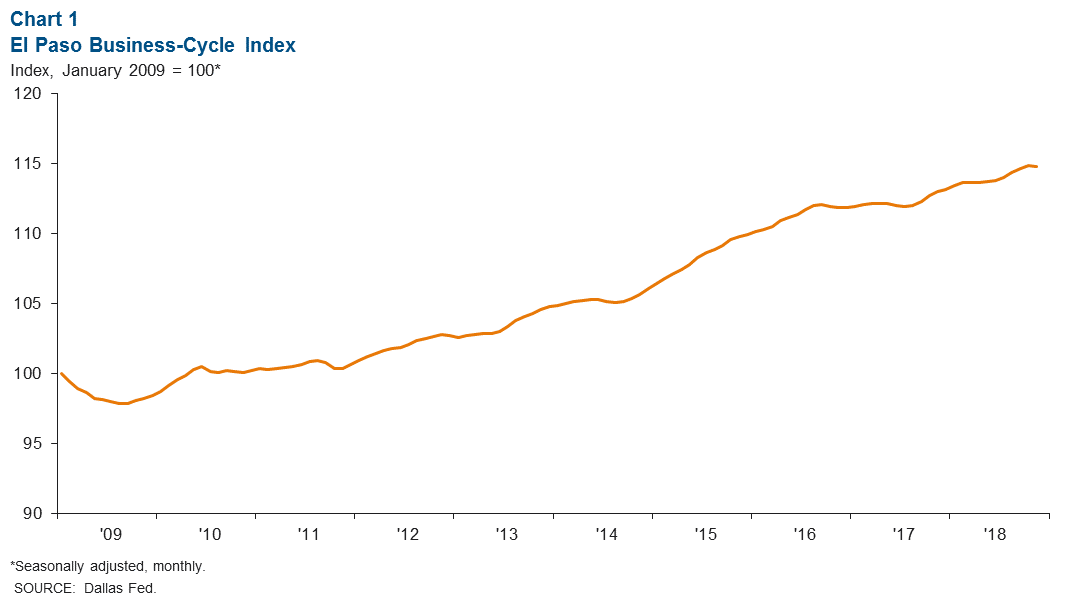
Labor Market
In November, El Paso payrolls fell at an annualized rate of 4.1 percent, driven by a sharp contraction in professional and business services (Chart 2). However, year to date, payrolls have expanded at an annualized rate of 1.4 percent. Of the 4,000 jobs added year to date, trade, transportation and utilities has added more than any other sector (1,700).
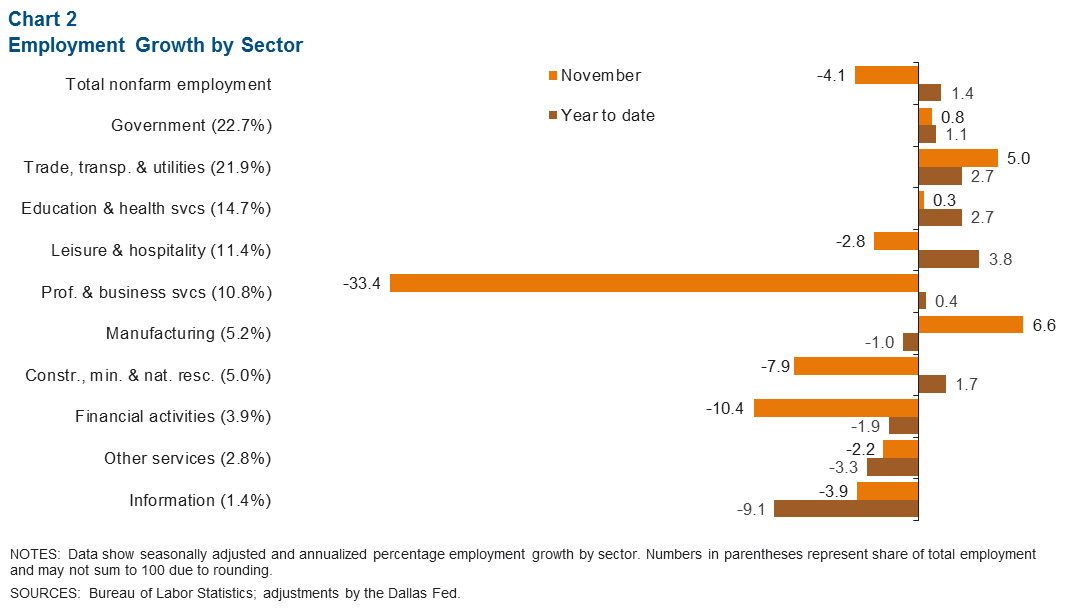
In November, the unemployment rate remained unchanged from October at 4.1 percent. The El Paso rate is slightly above the U.S. and Texas rates of 3.7 percent.
Housing
Although El Paso existing-home sales edged down over the month, sales remain robust compared with a year earlier (Chart 3). In November, annualized sales totaled 8,587, 7.3 percent above the same period a year ago. Also in November, the median home price stood at $154,007, up 0.6 percent from November 2017.
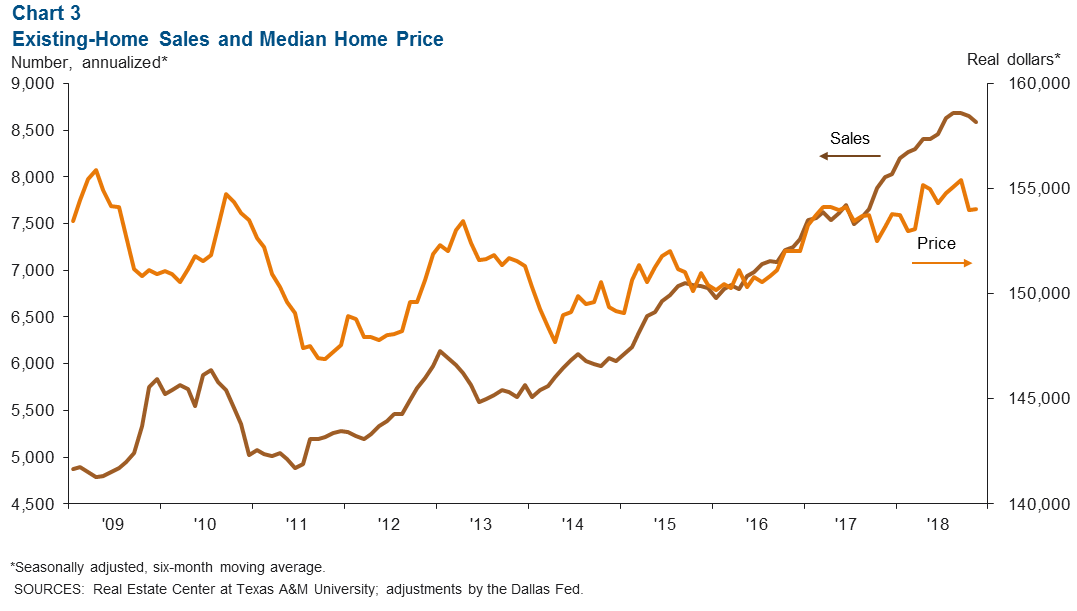
Meanwhile, existing-home inventories continue to slip. In November, inventories stood at 4.1 months, well below the six months of supply associated with a balanced market.
Trade
In October, annualized trade through the port totaled $82.8 billion, up 4.5 percent from a year earlier. The gain is due to increases in both imports and exports (Chart 4). October exports were an annualized $33.4 billion, up 9.6 percent from the previous year, while annualized imports summed to $49.4 billion, up 1.4 percent.
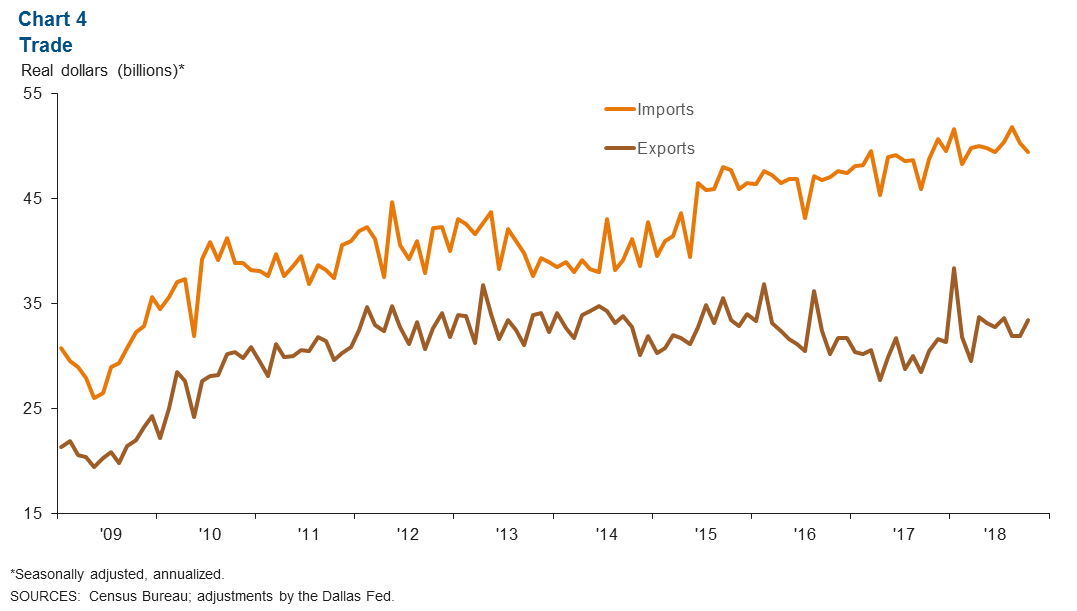
Industrial Production and Maquiladora Activity
U.S. industrial production rose 3.9 percent year over year in November (Chart 5), and the Institute for Supply Management manufacturing index rose to 59.3, well above 50, which signals expansion. U.S. manufacturing conditions remain solid. U.S. and Mexican production and manufacturing trends are important to the local economy because of cross-border manufacturing relationships.
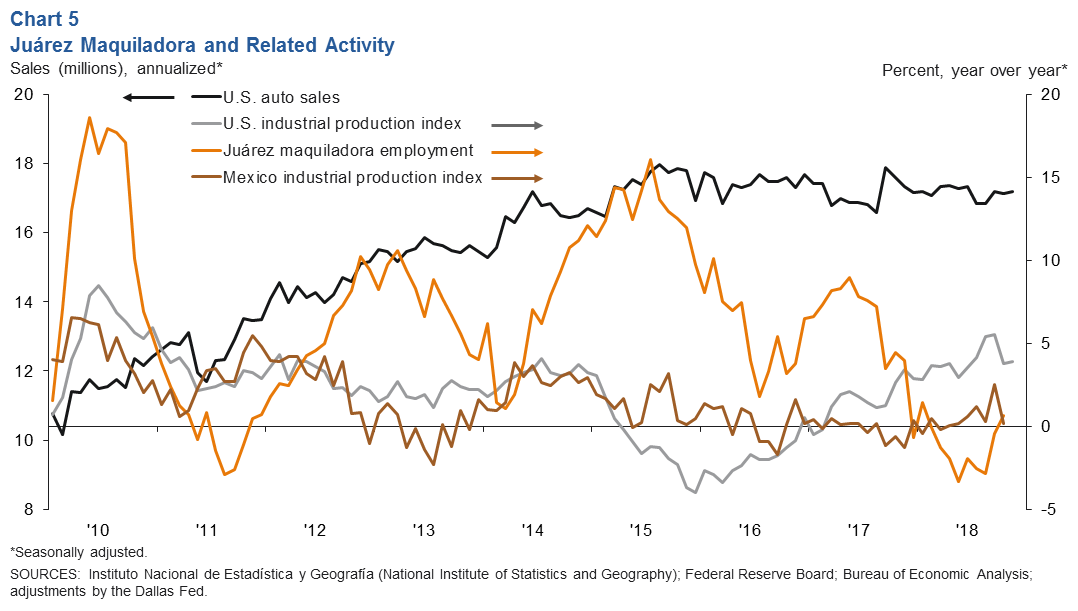
Across the border from El Paso, Juárez maquiladora employment posted year-over-year growth in October, the first positive reading since January 2018. According to Mexico’s official series, maquiladora employment rose 0.6 percent in October to 274,444. The tight labor market is likely partially responsible for the sluggish growth.
U.S. auto and light-truck production was 11.0 million in November, slightly above the 10.6 million units produced a year earlier. Meanwhile, monthly auto sales totaled 17.2 million, just below the 17.3 million sold a year earlier. Auto sales are closely linked to the local economy because roughly half of maquiladoras in Juárez are auto related.
NOTE: Data may not match previously published numbers due to revisions. The El Paso metropolitan statistical area includes El Paso and Hudspeth counties.
About El Paso Economic Indicators
Questions can be addressed to Marycruz De León at marycruz.deleon@dal.frb.org. El Paso Economic Indicators is released on the fourth Wednesday of every month.